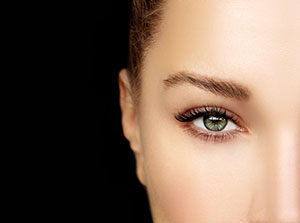 What is a blepharoplasty procedure?
What is a blepharoplasty procedure?
A blepharoplasty procedure can help men and women of all ages to overcome the inevitable signs of skin ageing above, below and around the eyes. This procedure is typically performed to produce a fresher and more youthful eye appearance. The ultimate aim of the surgery is to remove or relocate fat and smooth the loose, lined, crepey skin that can be associated with sun damage and the ageing process.
What does the operation involve?
When performing an upper blepharoplasty procedure, the surgeon will normally excise a narrow crescent shaped portion of skin and underlying tissue from the middle of the upper lid, leaving a microscopic incision, which will follow the natural crease line of the upper lid.
A lower blepharoplasty procedure involves the surgical removal or relocation of fat just below the surface of the skin, or the removal of loose skin. This procedure is performed through an incision, normally just below the lower lash line.
How soon will I recover?
A procedure performed under local anaesthetic will commonly be performed as a day case and a procedure performed under general anaesthetic will commonly involve an overnight stay in hospital. Under normal conditions a blepharoplasty procedure can take from one to one and a half hours to perform.
This procedure has encouraging and relatively speedy results, freeing men and women from a prematurely puffy and/or an unattractively lined and wrinkled facial appearance.
Improved results may take place almost immediately following surgery, but will be obscured by the inevitable bruising and swelling that takes place following this type of procedure. After the initial swelling has settled down (usually after the first week) subtle improvements to the contour and newly refined eye area will take place for up to six months following surgery.
Patients are encouraged to stay as mobile and upright as possible during their early recovery stage to help reduce any swelling or bruising. Patients usually describe the way their eyes feel, as ‘uncomfortable’ and ‘tight’, rather than painful in the initial recovery stages.
Patients will also be advised to take a specific amount of recovery time away from work, dependent on the type of work they perform. Patients are asked to avoid direct sunbathing on the eye area for at least 12 months following surgery due to sensitivity to sunlight. Initially it is good practice to wear sun glasses.